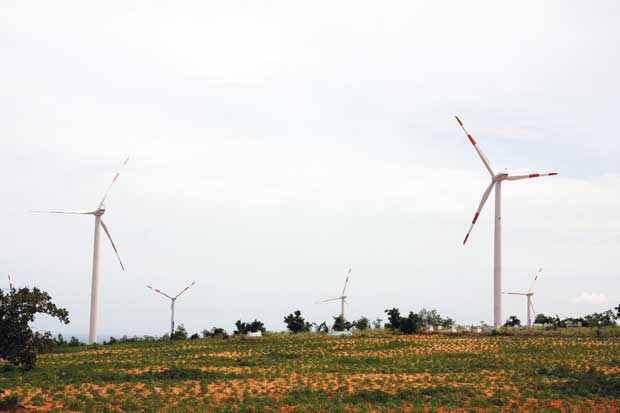Wind power in Vietnam: three problems may shrink investors back
Published: 08/06/2013 10:17
The Bac Lieu wind power project has succeeded. However, this does not mean that the problems have all been settled. And they would still be the hindrance to the other wind power projects in the future.
The three biggest problems Vietnamnet |
Provide by Vietnam Travel
Wind power in Vietnam: three problems may shrink investors back - Sci-tech | vietnam travel company
You can see more
- WIPO supports Vietnam to develop national strategy on intellectual property
- Viettel deploys 4G nationwide
- Online sellers & buyers swindle each other
- Vietnam’s first remote sensing satellite launched after delay
- Vietnamese big guys vie with one another to distribute “eaten Apple”
- Broadcasters provide services below cost prices to attract more subscribers
- Vietnamese companies try to make money with garbage
- VN, Cuba to Cooperate Further in Biotechnology
enews & updates
Sign up to receive breaking news as well as receive other site updates!
- Hanoi ranked top 3 cuisine in the world in 2023
- Beautiful resorts for a weekend escape close to Hanoi
- Travel trends in 2023
- In the spring, Moc Chau is covered in plum blossoms.
- The Most Wonderful Destinations In Sapa
- Top 3 Special festivals in Vietnam during Tet holiday - 2023
- 5 tourist hotspots expected to see a spike in visitors during Lunar New Year 2023
- How To Make Kitchen Cleaned
- Health benefits of lime
- Cooperation expanding between Havard University and Vietnamese universities
-
vietnam travel
http://www.vietnamtourism.org.vn " Vietnam Tourism: Vietnam Travel Guide, Culture, Travel, Entertainment, Guide, News, and...
-
Vietnam culture, culture travel
http://travel.org.vn " Vietnam culture
-
Vietnam travel, vietnam travel news, vietnam in photos
http://www.nccorp.vn " Vietnam travel, vietnam travel news, vietnam in photos
-
Vietnam tourism
http://www.vietnamtourism.org.vn " The official online information on culture, travel, entertainment, and including facts, maps,...
-
Vietnam Travel and Tourism
http://www.vietnamtourism.org.vn/ " Vietnam Travel, Entertainment, People, Agents, Company, Vietnam Tourism information.
-
Information travel online
http://www.travellive.org "Information travel online













